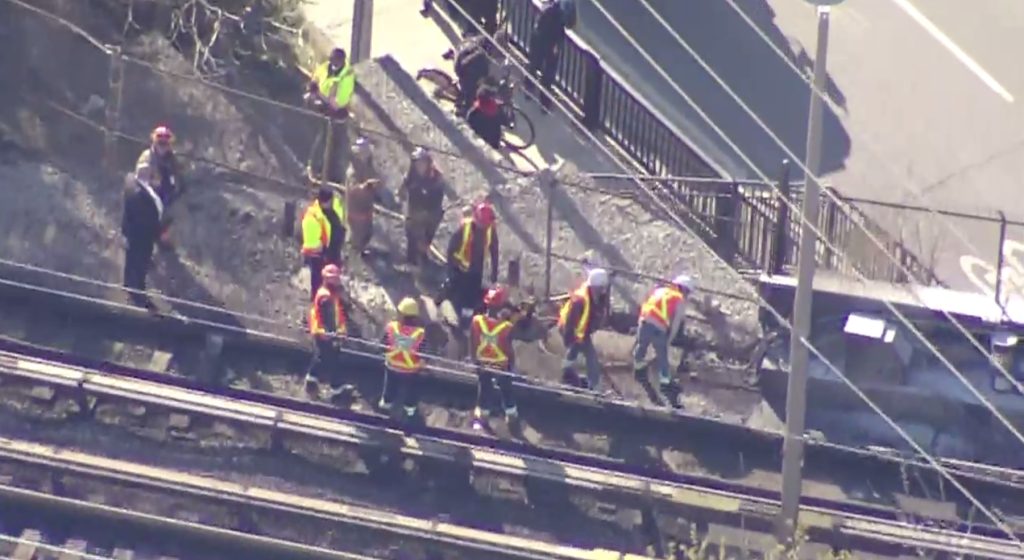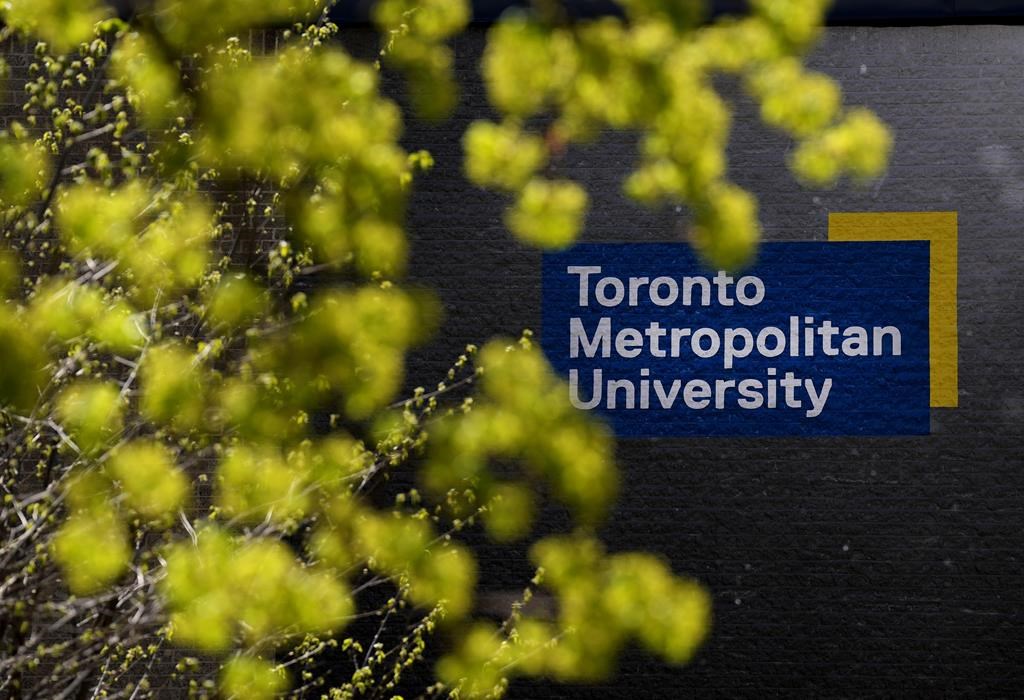Advocates say some downtown streets must close to aid social distancing
Posted April 14, 2020 6:32 pm.
Last Updated April 14, 2020 8:44 pm.
Social distancing rules have been in effect in Toronto for a few weeks and bylaw officers have begun handing out tickets to those violating them.
But many have been calling attention to the fact that it simply isn’t possible to stay six-feet away from another person on many downtown Toronto streets.
Sidewalks are narrow, scaffolding and construction often blocks walkways and trashcans, mailboxes or newspaper vending machines further obstruct one’s path.
By design, most Toronto sidewalks are between 1.5 to 2 metres wide and with all those hurdles to contend with, pedestrians are sometimes forced to walk into live traffic to keep the recommended distance away from others.
A video that went viral this week illustrates the problem with a tongue-in-cheek “social distance machine.”
Made a Social Distance machine to show why @cityoftoronto needs to close major streets like Yonge during COVID-19. Our sidewalks are too narrow to keep a safe distance.
Tell @JohnTory and your local councillors: #streets4peopleTO!https://t.co/uUmYOxOGZv pic.twitter.com/ZiCwuSECx9— Daniel Rotsztain (@theurbangeog) April 13, 2020
In response to the problem, a growing chorus of advocates are supporting the idea of closing some downtown streets to traffic to make them pedestrian-only walkways, as has been done in some other Canadian cities like Montreal, Vancouver, Calgary and even Brampton.
“You can’t walk past [other people] without stepping onto the road, which is full of potentially dangerous speeding drivers, so there’s something here that really needs to change. The hospitals don’t have the capacity to deal with victims of road violence at this time,” says pedestrian advocate Jess Spieker. “It’s just not fair to funnel people onto sidewalks without making the streets safer,” she says.
Mayor John Tory was asked about the possibility of closing down streets in favour of pedestrians and his response was non-committal.
“I’m not saying no. I’m saying not now,” he said in his daily news briefing on Monday.
Tory says he is making all his decisions based on advice from Toronto Public Health, who in turn say the risk of transmitting the virus on sidewalks is low.
“The risk when you pass someone in an open air environment, if its quick, is considered low. We can’t say zero — there’s no such thing as an absolute zero, but it is a very low risk,” says chief medical officer of health Dr. Eileen de Villa.
Two Ryerson University epidemiologists have penned an open letter to Toronto’s mayor, urging him to reconsider.
Ryerson faculty member Dr. Anne Harris says the mayor’s reluctance might stem from wanting to avoid confusion.
“I think the city is struggling with trying to make sure they’re not giving contradictory advice,” she says. “They don’t want there to be a contradiction of ‘please stay home, but here are places for you to walk’.”
However, Harris adds that while the city may not want to promote recreational walking, people still need to leave the house for essentials and a lot of essential travel happens on foot or on bicycle.
We shot video this afternoon of pedestrians walking into live traffic to avoid others on the sidewalk. Groceries in hand, in most cases, these aren’t leisurely walks through the neighbourhood. Other cities (Edmonton, Vancouver, Brampton) have made changes to give peds more space. pic.twitter.com/VnfambNaAf
— Tina Yazdani (@TinaYazdani) April 14, 2020
“The contradiction is what we have now. The contradiction is to say ‘make sure you stay 2 metres away if you have to leave the house for essential reasons’,” when there is no room to practice that.
In the mean time, while the streets remain open, one Toronto startup is designing an app to help with the problem by highlighting the most crowded sidewalks during the pandemic. MapInHood CEO Bin Liu, says the app then offers alternate routes which would ideally separate people naturally.
“If we start spreading out foot traffic for pedestrians, it’s safer for everyone and easier for people to keep that distance,” he said.










